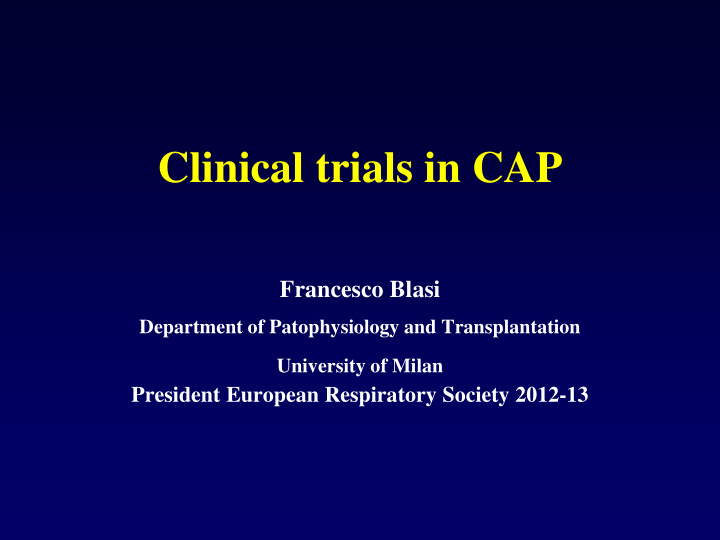



Clinical trials in CAP Francesco Blasi Department of Patophysiology and Transplantation University of Milan President European Respiratory Society 2012-13
E During hospitalization R + Improvement Non-resolving pneumonia Failure - T2 T0 T1 T3 T4 T5 T6 T7
Different clinical or logistical questions may require different definitions • Microbial etiology • Possibility of benefit from specific or supportive therapy • Probability of morbidity or mortality Most commonly the question of location of care has been the central problem of CAP severity
ETIOLOGY • SCAP has a somewhat distinct microbial etiologic predominance from CAP, with a higher representation of Staphylococcus aureus and Gram-negative organisms • Unfortunately, the inciting organism may be independent of the actual physiologic severity of CAP, as with the pneumococcus, which is heavily represented in both severe and non-severe CAP.
Risk for MDR pathogens CAP HCAP HAP Morbidity and Mortality
Mortality Marin H. Kollef, Andrew Shorr, Ying P. Tabak, Vikas Gupta, Larry Z. Liu, and R. S. Johannes. Epidemiology and Outcomes of Health-care- Associated Pneumonia: Results From a Large US Database of Culture-Positive Pneumonia. Chest 128 (6):3854-3862, 2005
Aliberti S. CID 2012; 54 (4): 470
Clinical Prediction Rules • PSI and CURB-65 (in various versions) have demonstrated utility in recommending outpatient therapy for low-risk patients. • These two models do not perform well at predicting which patients will require ICU admission or intensive therapy • They tend to overestimate severity in patients with advanced age or chronic organ failure and underestimate severity in younger patients
Recommend
More recommend